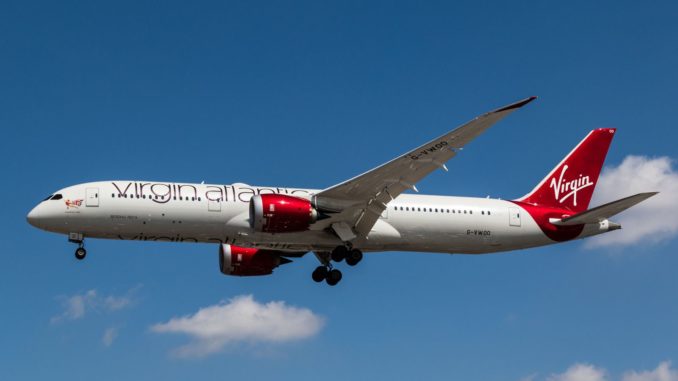
Ten feet was all that separated a Virgin Atlantic jet from colliding with a high-flying drone in what is thought to have been the closest ever near-miss between one of the gadgets and a commercial airliner, a new report has revealed.
The Heathrow-bound B787-9 Dreamliner plane – which would have been carrying as many as 264 passengers – was performing its descent above Clapham Common when the drone was seen passing just below its right wing.
According to the UK Airprox Board, which investigates near-misses and files monthly reports on them, it avoided impact with the engine by an estimated 10ft (3m).
“The drone was being flown beyond VLOS (visual line of sight) limits and on an airfield approach path such that it was endangering other aircraft at that altitude and position,” said the report.
“The board agreed that the incident was therefore best described as the drone was flown into conflict with the B787.
“The board considered that the pilot’s overall account of the incident portrayed a situation where providence had played a major part in the incident and/or a definite risk of collision had existed.”
Airprox labelled the risk of collision as “high” and the Civil Aviation Authority said it was believed to be the closest a drone had ever come to striking a commercial plane in the UK.
The near-miss happened on the afternoon of 25 June, with the VS301 flight almost at the end of an eight-and-a-half hour journey from the Indian capital of Delhi.
It was at an altitude of 3,200ft (975m) at the time – meaning the drone was being flown at eight times the legal height.
Drones – which are readily available on the high street and in online stores – are only allowed to fly below 400ft (122m) under laws introduced earlier this year.
The unmanned aerial vehicles are also required to steer clear of flight paths and must be within sight of their operators at all times.
According to a report by the Ministry of Defence and Military Aviation Authority, there were more than 50 reports from commercial airline pilots of near-misses with drones in 2016.
Should a drone collide with a plane, the force of the impact could disable an engine or smash the windscreen, which may cause serious injury to a pilot.
Virgin Atlantic confirmed to Sky News that those in the cockpit on 25 June reported the incident immediately to air traffic control – and said it was further evidence that tougher laws were required to stop drones interfering with planes.
“It’s vital that action is taken to regulate the use of drones near airports, and we urge the government to consider further proposals,” a spokesman added.
END

Be the first to comment